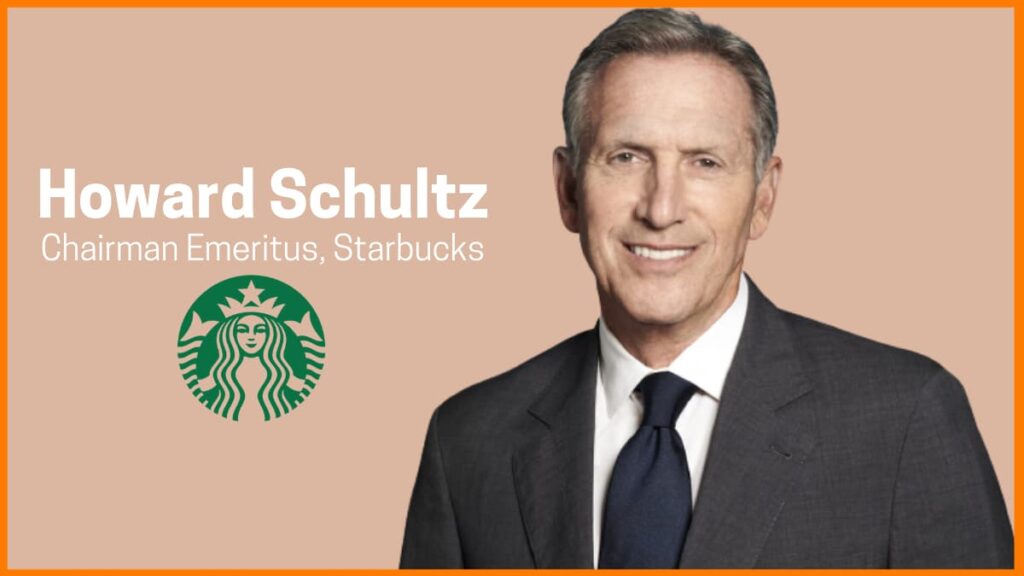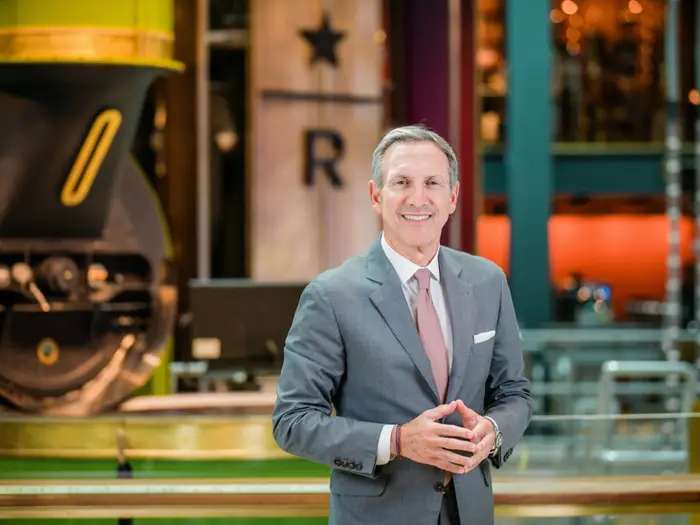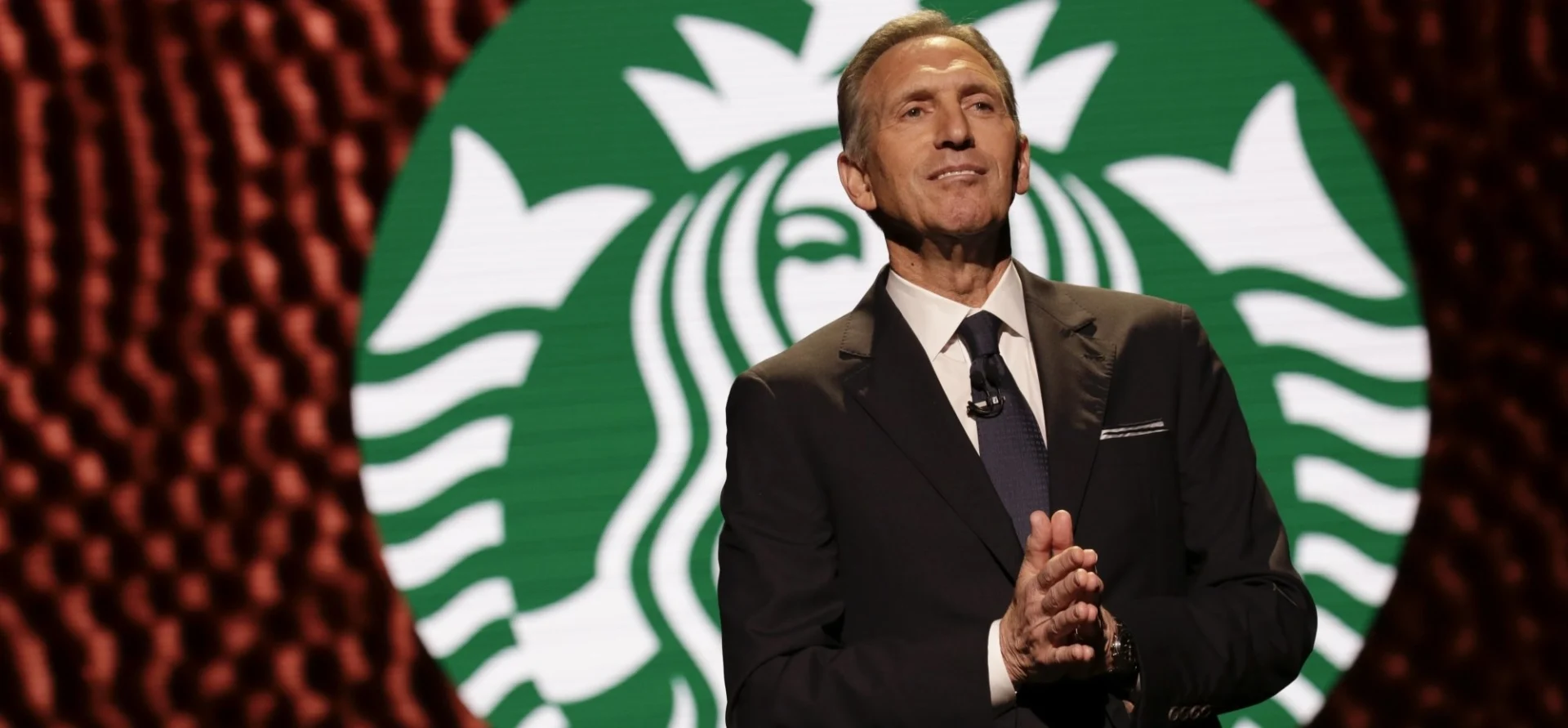Introduction

It’s simple to concentrate on tech titans or celebrities when discussing real success and real stories. However, the story of Howard Schultz—the man who turned a tiny coffee shop in Seattle into Starbucks, one of the most well-known companies in the world—is among the most compelling illustrations of tenacity, foresight, and will. This is a profoundly personal tale of overcoming hardship, clinging to goals, and never forgetting one’s roots—it’s not just a real success story.
From Brooklyn’s Housing Projects
In the Canarsie Bayview housing projects in Brooklyn, New York, where aspirations frequently die before they are born, Howard Schultz was born on July 19, 1953. Life was difficult, and his family was impoverished. His father was a former army trooper who never had the chance to go up the economic ladder and worked at low-paying occupations, such as driving a truck.
Seeing his father return home hurt after a delivery after slipping on ice, unable to work, and without workers’ compensation or health insurance, is one of Schultz’s earliest and most distinct recollections. That picture stuck with Howard and influenced his views on business, worker rights, and respect in the
Despite his financial difficulties, Schultz turned to athletics and literature for solace. Early on, he was aware that he didn’t.
The First Step: Education as Escape
Howard’s escape route was education. He received a football scholarship, making him the first member of his family to attend college. He studied communications at Northern Michigan University. Following college, he worked in sales before landing a job at Hammarplast, a Swedish firm that sold coffee makers and other household goods.
In this capacity, he first came upon Starbucks, a tiny coffee shop in Seattle. Starbucks only offered roasted coffee beans and equipment at the time; lattes and espresso shots were not available. Schultz, however, noticed something more. He thought that Americans’ perceptions of coffee might be completely changed by this brand.
A trip to Italy was a turning point.

Schultz visited Milan, Italy, in 1983. Everything changed when he saw what was there. Coffee was more than simply a beverage for Italians; it was their way of life. The cafés served as gathering spots for friends, family, and discourse, serving as cultural centers. It was an experience rather than just a drink.
Upon his return, Schultz presented the Starbucks founders with the idea: let’s transform Starbucks from a retailer to a coffeehouse. They turned down the proposal.
Persistence, however, is the foundation of real success stories. Unfazed, Schultz quit the company to launch Il Giornale, a chain of coffee shops that aims to recreate the Italian coffee experience. It was successful. After Il Giornale expanded quickly, Schultz had enough investors in two years to buy Starbucks for about $3.8 million.
He was only beginning to
Building a Global Empire
Starbucks became a major force in the world under Schultz’s direction. He changed the way people thought about coffee, brought the espresso bar concept to America, and concentrated on establishing a “third place” between home and work. Starbucks did more than just sell drinks; he aggressively grew, first domestically and then abroad. Starbucks boasted millions of devoted patrons and thousands of stores by the early 2000s. Schultz was a visionary in addition to being the CEO.
It was Schultz’s emphasis on people, however, that really set Starbucks apart. In light of his father’s disabilities and lack of benefits, Schultz gave employee welfare first priority. In an uncommon move for corporate America, Starbucks provided full-time and part-time workers with comprehensive health insurance. Additionally, he gave baristas stock options, referring to them as “partners” rather than workers.
Real Success with a Real Heart
The tale of Howard Schultz is a profoundly emotional one as well as a financial success. His goal in founding Starbucks was to make a difference, not to get rich. He was a firm believer in conducting business ethically and in making choices based on purpose as well as profit.
Schultz has frequently stated in interviews that *”Success is best when it’s shared.” His conviction inspired him to establish a corporate culture that prioritized respect, caring, and human connection.
However, things weren’t always easy. After resigning as CEO in 2000, Schultz returned in 2008 as the business started to struggle. Starbucks was experiencing financial downturn, had lost its mystique, and had grown too quickly. Schultz bravely and painfully decided to retrain baristas, close underperforming outlets,
Remaining True While Taking Criticism
No true success story is free of criticism. Backlash has been directed at Schultz for a variety of reasons, including union resistance and political positions. However, he has consistently been outspoken about his beliefs, which include social justice, diversity, ethical sourcing, and employee healthcare.
In 2018, Schultz resigned once more and made a suggestion that he would run for president of the United States. Even though that endeavor never succeeded, it demonstrated his unwavering commitment to helping others and changing the world.
Even though he is no longer in charge of Starbucks’ daily operations, the culture he established continues to define the company. And there is no denying his impact on contemporary business.
Lessons from Howard Schultz’s Story
The journey of Howard Schultz is fi
1. The beginning does not determine the finish.
Born into poverty, Schultz went on to build a multinational corporation. He broke down boundaries between generations not by chance but by perseverance and hard work.
2. Vision is important.
It was more than simply coffee. The experience, the community, and the values were all part of the larger picture that Schultz saw. Seeing what others miss is frequently the first step toward true accomplishment.
3. Take chances.
It was extremely risky to quit a stable employment to launch Il Giornale. Purchasing Starbucks was even more significant. However, those leaps brought about unthinkable benefits.
4. Show empathy as a leader.
By treating workers like partners, providing benefits, and creating a company based on values, Schultz demonstrated that compassion and financial success can coexist.
Impact Beyond Business
Howard Schultz’s story goes beyond coffee. His life represents the American Dream — and more importantly, a universal dream of rising above your circumstances, staying true to yourself, and giving back once you’ve made it. He turned a painful childhood memory into a mission to create dignity in work. He built a business empire on the idea that people matter. And he inspired millions to dream bigger, work harder, and lead with purpose.
Conclusion: A Real Success, A Real Story
Howard Schultz’s narrative serves as a potent reminder of what real success looks like in a culture when dramatic headlines rule and quick victories are praised. It goes beyond simply accumulating wealth. It’s about creating something significant. Something that makes people feel better. Something that endures beyond you.
His path from the housing projects in Brooklyn to the boardroom of Starbucks is a tale of hope, perseverance, compassion, and genuine change rather than merely one of commerce.
Howard Schultz is a great example for your readers searching for real stories that uplift and inspire: regardless of your background, what matters most is where you decide to go and who you uplift along the way.

